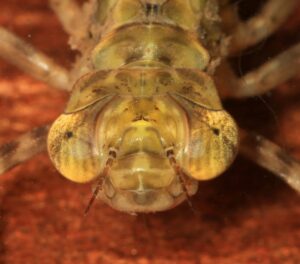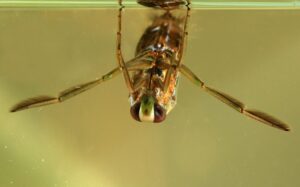Hunting For Monsters!
Apparently there’s no such thing as monsters! From a young age, most of us are taught not to worry about those things that go bump in the night, and that monsters are just products of an overactive imagination – but is this statement completely true? With Halloween around the corner, Dan Lombard begins a new series taking a closer look at a hidden world all around us, starting with the search for monsters – some of which are just as frightening as anything lurking on the bookshelf …
Nowhere is the cliché of science being stranger than fiction more obvious than in the invertebrate kingdom, where so many weird and wonderful creatures are encountered. The term monster may be a little anthropomorphic and unfair in relation to wildlife, but it perfectly encapsulates some of the fantastic creatures we will be taking a closer look at in this series. Invertebrates – and spiders in particular – strike fear into the hearts of people far more than any creation of fantasy.
There is perhaps no better place to go monster hunting than in the murky depths of a pond. Ponds are home to so many natural born killers that a wrong move could turn to terror at any given second for many of the ponds inhabitants. There are few players in this game more terrifying to the pond dweller than the Great Diving Beetle. These beautiful, brutish, emerald beetles (which are actually several closely related species) are absolute beasts, big enough to tackle anything up to the size of newts and small fish. With their aerodynamic shape seamlessly cutting through the water column, propelled by strong hairy hind legs, these fearsome beasts use their large razor-sharp jaws to slice open any prey not fast enough to escape with relative ease. A visual predator with excellent eyesight, Great Diving Beetles feed predominantly on invertebrates, small fish and tadpoles, but also feed on carrion, making them an important regulator within the ponds ecosystem.

Female Great Diving Beetle (Dytiscus marginalis)

Close-up of the head of a Southern Hawker nymph
While few creatures in the pond match up to the sheer brutish ferocity of the Great Diving Beetle, one which emphatically holds its own in this game of life and death is the dragonfly nymph. The larger hawker and emperor nymphs in particular are formidable predators with a real appetite for destruction, capable of tackling prey far larger than themselves. Lacking the overall speed of the diving beetle, these large nymphs (over 5cm in size) are ambush predators, equipped with a hinged projecting lower jaw. At rest this is folded below the mouth, and upon close approach of an unsuspecting pond dweller turns into a lethal weapon, projecting forward at lightning speed, gripping its prey with two large curved mandibles. Wriggling in vain for its freedom, the helpless prey is secured in the jaws as the mandible draws it back towards the nymph’s mouth, where it is then eaten alive.
Our third monster is perhaps one of the most iconic and easily recognised of our pond creatures – the Backswimmer, often spotted as it swims along nonchalantly just below the water’s surface. Upon first view this rather small bug appears to be relatively harmless, but this creature has a horrifying dark side to its persona. Lacking the power and the sharp jaws of the other two species, the backswimmer is still a voracious predator in its own right. Instead of razor sharp crushing jaws, its tool of death is a terrifying needle-like proboscis. Equipped with an excellent sense of vibration, the backswimmer waits for terrestrial insects to fall onto the ponds surface where they become trapped in the water’s film; sensing a struggle, the backswimmer intercepts its prey, piercing its body with its proboscis through which it then proceeds to inject its acidic saliva. As the saliva starts to digest the internal tissues of its still living prey, the backswimmer then literally drinks the dissolving contents of its prey’s body.

Backswimmer (Notonecta glauca)
Few monsters of science fiction match up to these three pond predators, and unlike those found in the books and movies, all three are living breathing creatures with which we can interact. All three are widely distributed in ponds throughout the Observatory recording area, and despite their fearsome reputations, they are all part of an increasingly fragile habitat and all play key roles within these ecosystems.
By Dan Lombard
